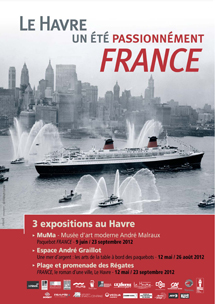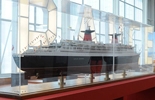Paquebot France
from July 09 to September 23, 2012

Particular emphasis was placed on creating an inhabitable machine, decorated by great ensembliers such as André Arbus, Dominique, Jean Leleu, Maxime Old, Jacques Dumond and Marc Simon, and with works of art by Raymond Subes, ;Robert Wogensky, Jean Picart Le Doux and Picasso, among others. The exhibition also underlines the importance of Le Havre's maritime heritage, and the ties that bind it to the city's artistic heritage. The Musée d'art moderne André Malraux, an exact contemporary of the France, thus pays the ship a fine tribute, and returns with a special theme exhibition on its great predecessor of the 1930s, the Normandie.



